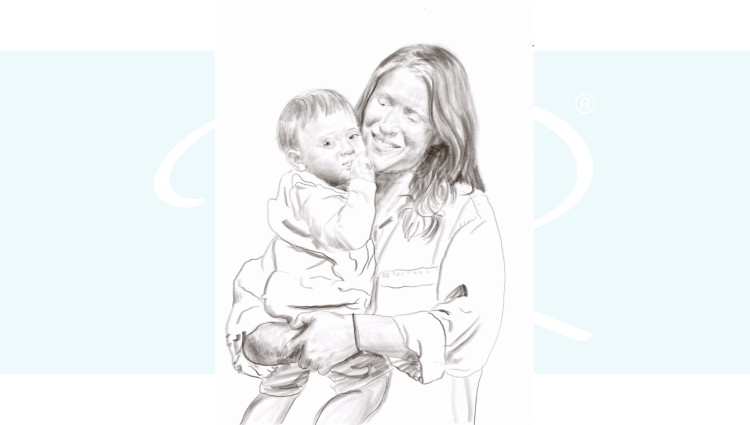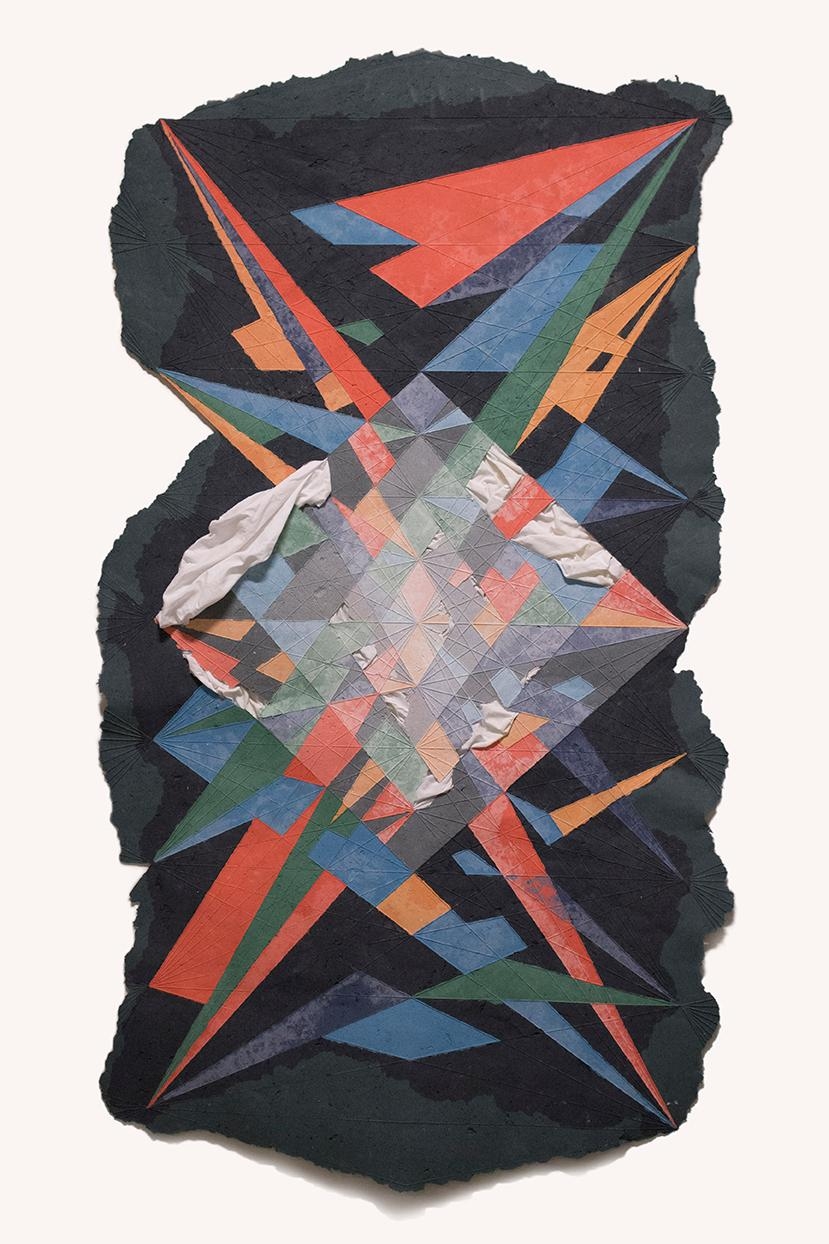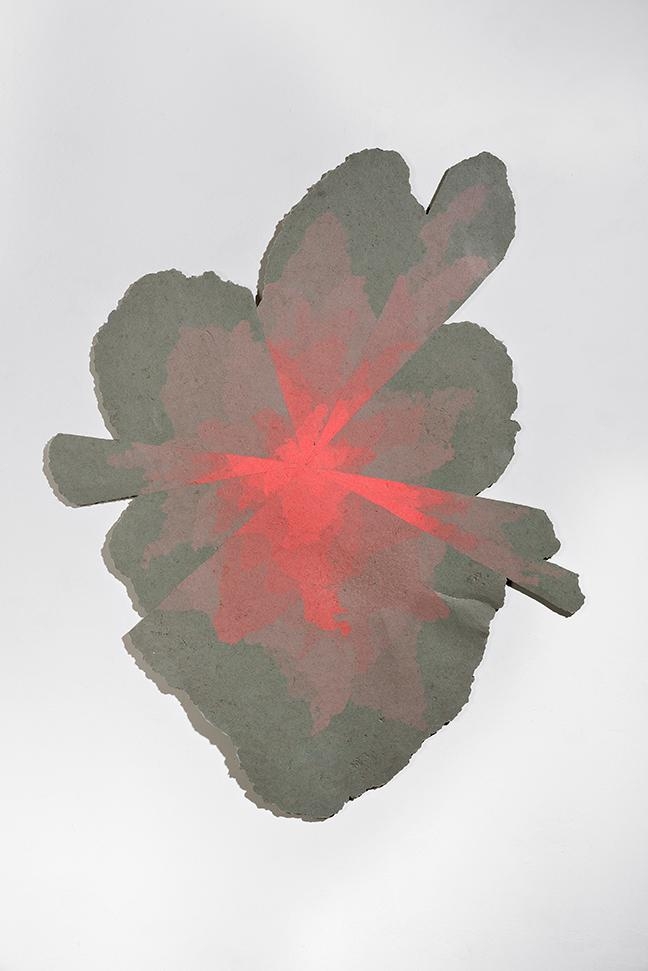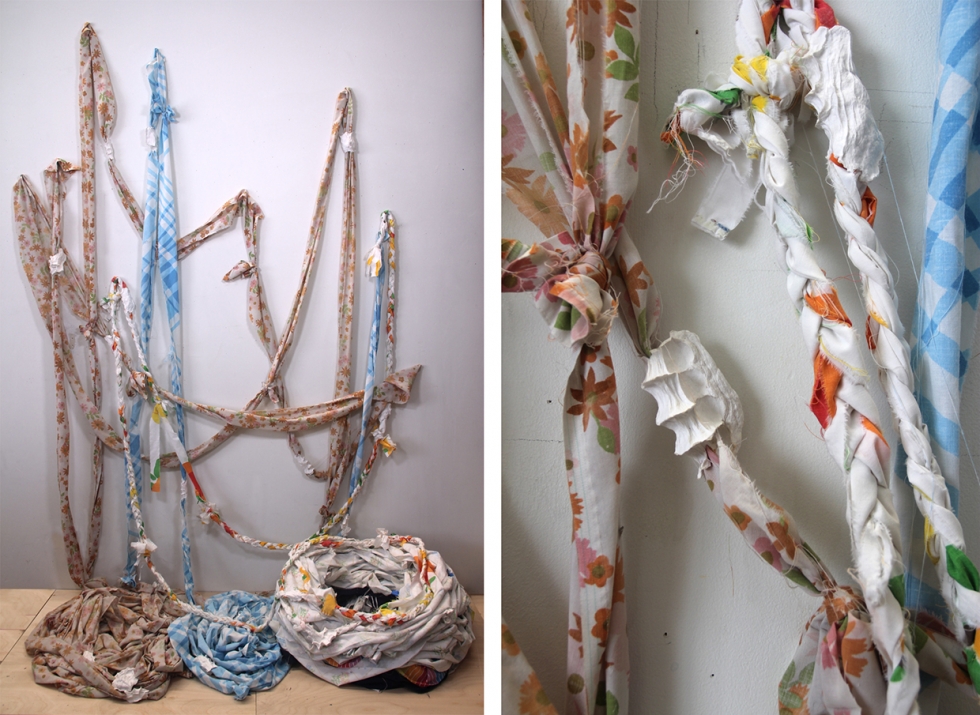
The San Francisco Advocacy for the National Museum of Women in the Arts in conjunction with the NMWA 2020 Women To Watch exhibition series inspired me to feature five amazing female artists. This is part three of five Q&A sessions. I hope you check out their work and enjoy the creativity.
Q&A with Julia Goodman
1. Robin: What is your favorite part of the creative process?
Julia: It is extremely satisfying and hopeful to imagine a piece in my head and then realize it in the real world with my hands. That said, my favorite moments are when my materials surprise me or lead me away from my original vision and things turn out more interesting than I imagined. Making feels flat to me when things go exactly as planned.
2. R: Can you discuss the concepts or artists that have influenced your work?
J: In my work I keep circling back to listening, absorbing, holding, healing, redefining strength, vulnerability, coming undone, feminism and environmentalism. Today (7/26/20) I read a stunningly beautiful proposal for simple and powerful poetic daily ways to memorialize this moment by Indira Allegra in the SF Chronicle. Every day I am inspired in some mundane or marvelous way by my husband and our son.
3. R: What is the goal of your work?
J: My material choices and paper making as a model for transformation are the foundation of my work. I make paper from discarded and recycled t-shirts and bedsheets because I want an art practice with as low of ecological footprint as possible because I believe in the possibility of transformation, and because I believe these fabrics carry innumerable personal stories forward with them and that domestic spaces and personal lives hold value. Studying the history of European rag papermaking, I learned that at one point paper was made from cotton and linen rags gathered by peddlers from mostly women in villages and towns. I like to imagine what if when we opened a book from this era, rather than read the ink on the pages, what if we could somehow read or hear all of the stories held by the various fibers that make up the paper that hold the words.
4. R: Do you remember your first piece of work?
J: I vividly remember the first piece of paper I made in 2003 in my backyard with recycled paper, a kitchen blender, and a broken window screen. I knew nothing about paper making. I’m grateful that I followed my instincts first and played and experimented on my own before learning about technique and equipment.
5. R: What inspires you to create?
J: For me, making art creates time, space, and ritual to honor and process complex situations and emotions in a way that nothing else can. The studio is where I can listen, learn, and move through grief, love, anxiety, birth, relationships, motherhood, community, history, and the current multi-layered global and national crisis.
6. R: Do you have a method for creating titles for your work?
J: Some titles come immediately, and others take time. I need time to get to know some pieces well enough to know what to name them.
7. R: What are your favorite art museums and galleries to visit?
J: Creativity Explored (SF), Creative Growth (Oakland), and NIAD (Richmond) are three sister art studios/galleries that serve artists with developmental disabilities. This community of artists is a Bay Area treasure and places I recommend everyone visit regularly.
8. R: What was the best piece of advice you've been given?
J: My dad told me “You don’t regret what you do, you regret what you don’t do.”
9. R: What advice do you have for other female artists?
J: I am part of two critique groups. One has met monthly for over 5 years. The other has met less regularly over the last 2 years. Both groups continue to meet online through shelter in place. Lasting community and friendship with other artists are invaluable.
10. R: During this Shelter-in-Place, can you please describe a piece that you are currently working on.
J: I am currently working with the same materials in three distinct ways while looking for ways to incorporate the raw, torn fabric with the pressed pulps. One way of working is inside the studio on a horizontal surface, building up pulp over the course of a few days to two weeks (Sunet's Midwife and Wolf Moon). Secondly, I am also working outside, using the built environment, concrete and brick walls, as surfaces for casting paper (Akimboand Interlocked). The third way of working combines lines of ripped bedsheets with pulp compressed by my hands in different positions. For example, Tethered tracks the numbers of days of social distancing in 6 ft lengths marker with a “grip.” The piece is 660 feet and growing. I know I need to make this piece right now. I do not know when the project will end. It feels right to make something that is open-ended both in duration and composition.
11. R: Where would you like your career to be in five years?
J: I want to continue to grow as an artist, diving deeper into my materials both in terms of content and process while also contributing as an artist and a citizen towards moving "the art world", my local community and the country at large in the direction that I want to see our son and his generation grow up in.
Julia Goodman earned an MFA from California College of the Arts and a BA in International Relations and Peace & Justice Studies from Tufts University. Recent exhibitions include Contemporary Jewish Museum, San Francisco, CA; San Jose Museum of Art, San Jose, CA; California College of the Arts Hubbell Street Galleries, San Francisco, CA; Salina Art Center, Salina, KS; DePaul Art Museum, Chicago, IL; Poetry Foundation, Chicago, IL; Saint Mary’s College, Notre Dame, IN; and a forthcoming exhibition at the National Museum of Women in the Arts, Washington D.C. Her residencies include the JB Blunk Residency, Recology SF (The Dump), Angelic Organics (a biodynamic CSA in Illinois), and the Salina Art Center. Julia lives and works in Berkeley with her husband, artist Michael Hall, and their young child. You can see her work here. Julia is currently represented by EUQINOM Gallery.








